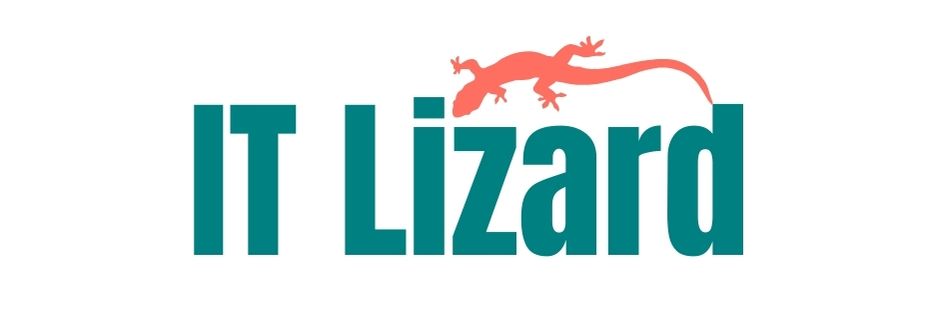Search Engine Optimization (SEO): Your Ultimate 2026 Guide to Mastering Google Ranking Factors and E-E-A-T
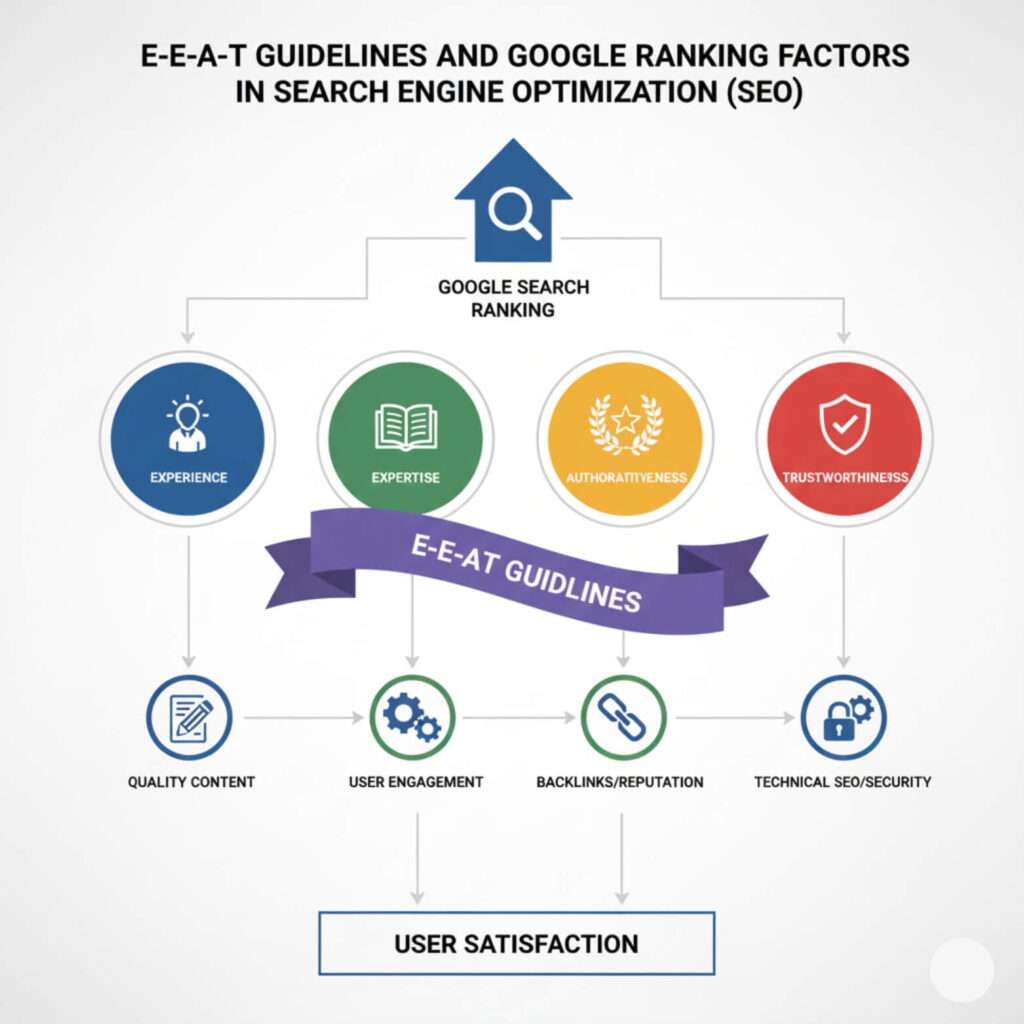
Table of Contents
Toggle1. Introduction: Why Search Engine Optimization (SEO) is Your 2026 Growth Engine
In 2026, the internet is more crowded than ever, and Google’s search results are constantly evolving, driven by advanced AI. Simply having a website is not enough; you need a strategic, expert approach to ensure your audience can actually find you. This is where Search Engine Optimization (SEO) becomes your most powerful digital asset.
Search Engine Optimization (SEO) is not a trick or a short-term hack. It is the sophisticated, long-term practice of aligning your website’s content and structure with what search engines—and, more importantly, users—are looking for. A successful strategy requires deep knowledge of Google Ranking Factors, a commitment to the E-E-A-T Guidelines, and constant technical refinement.
If your goal is to generate reliable, high-converting Organic Traffic, then mastering Search Engine Optimization (SEO) is non-negotiable. This ultimate guide breaks down every crucial element, from the foundational Keyword Research and Content Optimization to advanced Technical SEO, ensuring you have the knowledge to deploy the Best SEO Practices and achieve top rankings. Let’s dive into the core principles that govern search visibility today.
2. The Foundation: Understanding Core Google Ranking Factors in the AI Era
Google uses a complex, ever-changing algorithm to sort billions of pages. To rank, you must focus your effort on the factors that truly move the needle. These are the core elements that signal quality, authority, and relevance to the search engine.
2.1. The Critical Role of E-E-A-T Guidelines
Google’s emphasis on E-E-A-T (Experience, Expertise, Authoritativeness, and Trustworthiness) is the single most important development in recent Search Engine Optimization (SEO) history. It’s no longer enough to simply write about a topic; you must prove your right to be trusted as a source.
- Experience: Does the content creator have firsthand Experience with the product, service, or topic? (e.g., A review written by someone who actually used the product).
- Expertise: Does the content display deep, factual Expertise? (e.g., A tax guide written by a Certified Public Accountant).
- Authoritativeness: Is the website or author recognized as an Authority by other experts, publications, and institutions? This is often measured through high-quality backlinks and brand mentions.
- Trustworthiness: Is the site safe, accurate, and transparent? (e.g., Secure HTTPS, clear contact information, and accurate citations).
To satisfy these E-E-A-T Guidelines, your content should be verified, professionally presented, and clearly attributed to an expert. This dedication to quality is a critical Google Ranking Factor for any business content.
2.2. User Experience (UX) and Core Web Vitals
The way people interact with your site is a direct Google Ranking Factor. A poor User Experience (UX) signals to Google that your page did not satisfy the searcher’s intent, leading to lower rankings. Core Web Vitals are the key metrics Google uses to measure this experience:
- LCP (Largest Contentful Paint): Measures loading performance. It should occur within 2.5 seconds of the page starting to load.
- FID (First Input Delay): Measures interactivity. It should be less than 100 milliseconds.
- CLS (Cumulative Layout Shift): Measures visual stability. It should score $0.1$ or less.
Improving these vitals is a vital part of Technical SEO. If your site is slow, jumps around while loading, or is difficult to navigate, no amount of Content Optimization will save your rankings.
2.3. The Importance of Topical Authority and Content Marketing
In the age of semantic search, Google ranks topics, not just keywords. Topical Authority means covering an entire subject area comprehensively, establishing yourself as the go-to source. This is the goal of sophisticated Content Marketing.
Instead of writing one article on “SEO,” you create a cluster of interconnected articles covering On-Page SEO Techniques, Backlink Building, Technical SEO, and Keyword Research and Content Optimization. These linked pages create a dense web of information, signaling to Google that your site is a complete, authoritative entity on the subject.
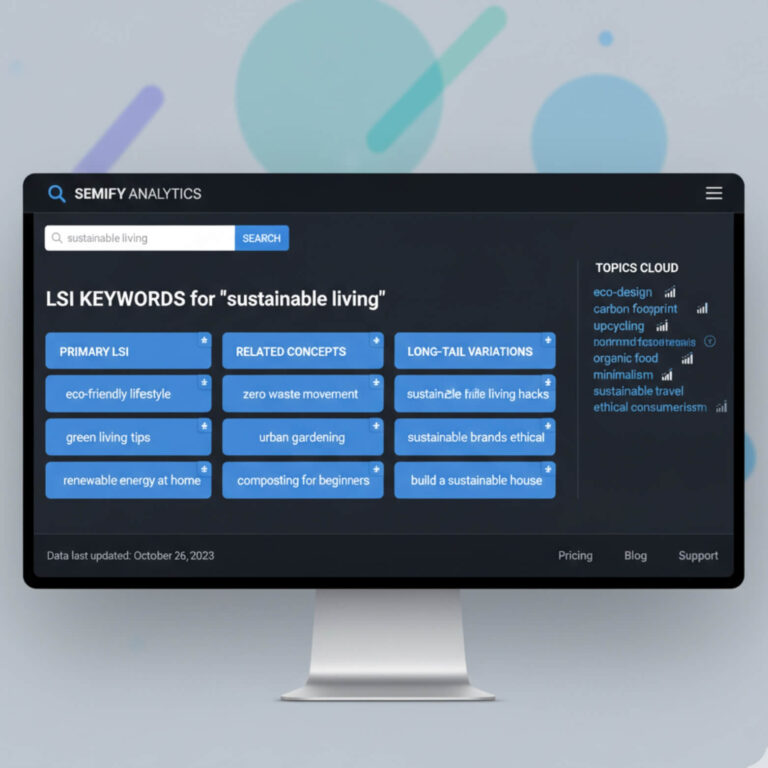
3. Phase 1: Advanced On-Page SEO Techniques for Immediate Impact
On-Page SEO Techniques are the optimisations you perform directly on your web pages. This is the simplest and fastest way to tell Google exactly what your content is about and where it should rank on the SERP.
3.1. Mastering Keyword Research and Content Optimization
Effective Search Engine Optimization (SEO) starts with intelligence. Keyword Research and Content Optimization is about identifying the exact words and phrases your target audience uses, understanding their intent, and building your content around that.
- Focus Keyword: The single primary term you want to rank for (Search Engine Optimization (SEO)). Use it strategically in the title, URL, H1, and the first 100 words.
- Secondary Keywords: Broader terms that structure your article (e.g., On-Page SEO Techniques, Off-Page SEO Strategy). Use them in H2s and H3s.
- LSI Keywords: Semantically related terms that provide context (e.g., Technical SEO, SERP, Backlink Building). Sprinkle these naturally throughout the body content.
Crucially, modern Content Optimization involves answering user questions fully. Use the “People Also Ask” (PAA) section of the SERP to identify sub-topics and questions to address within your article, thereby ensuring you satisfy the search intent completely.
3.2. Perfecting Title Tags, H-Tags, and Internal Linking
These structural elements are fundamental to signal relevance:
- Title Tag (Meta Title): This is the most crucial on-page element. It must start with the Focus Keyword and be emotionally compelling to maximize Click-Through Rate (CTR).
- H1 Heading: Used only once, as the main title of the page, containing the Focus Keyword.
- H2/H3 Headings: Act as a detailed outline for the article. They must naturally incorporate your Secondary Keywords and LSI Variations to structure the argument and enhance scannability.
- Internal Links: Add at least 2-3 high-quality, contextually relevant internal links. These links guide users and “link equity” to other important pages on your site, reinforcing your topical authority.
3.3. Leveraging Structured Data and Schema Markup
Structured data (or Schema Markup) is code that helps search engines better understand the context of your content. For a blog post, this means:
- Article Schema: Tells Google this page is a blog post, defining the author, publish date, and type of content.
FAQ Schema: Used in the FAQ section (Section 7), it allows your questions and answers to appear directly in the SERP as “Rich Snippets,” dramatically improving visibility and CTR. This is a powerful Technical SEO technique.
4. Phase 2: Winning with Off-Page SEO Strategy and Authority Building
Off-Page SEO Strategy involves building the reputation and authority of your site across the internet. In 2026, this is heavily influenced by your ability to satisfy the “Authoritativeness” and “Trustworthiness” components of E-E-A-T.
4.1. Strategic Backlink Building in a Quality-First Landscape
Backlinks remain a primary Google Ranking Factor, often described as “votes of confidence.” Your Off-Page SEO Strategy must prioritize quality over quantity.
- Relevance: The linking website must be topically relevant to Search Engine Optimization (SEO). A link from an established marketing site is far more valuable than one from an unrelated forum.
- Authority: Links from high-Domain Authority (DA) sites, especially those recognized as experts (e.g., universities, government sites, major industry news sources), carry the most weight.
- Natural Growth: Links should be acquired through creating content so exceptional that other experts want to cite it. Active Backlink Building through strategic outreach (broken link building, resource pages) is also vital.
Avoid black-hat tactics like link farms or buying links, as these violate Best SEO Practices and can lead to severe penalties that destroy your Organic Traffic.
4.2. Brand Mentions and Entity Recognition
Google is increasingly focused on recognizing and rewarding real-world Entities (businesses, people, products).
- Unlinked Mentions: When a high-authority site mentions your brand name without linking, Google can still recognize this as a signal of authority and trust, feeding directly into the E-E-A-T Guidelines.
- Knowledge Panel: Work on building up your brand’s presence so Google establishes a Knowledge Panel for you, signaling high confidence in your entity.
4.3. Local SEO (GEO) and its Growing Relevance
For businesses with a physical location or a service area, GEO (Geographic SEO) is crucial. This involves optimizing your Google Business Profile (GBP), ensuring your Name, Address, and Phone Number (NAP) are consistent across all directories, and acquiring local citations. Even for purely digital businesses, listing your HQ details can enhance trust and meet the “T” in E-E-A-T.
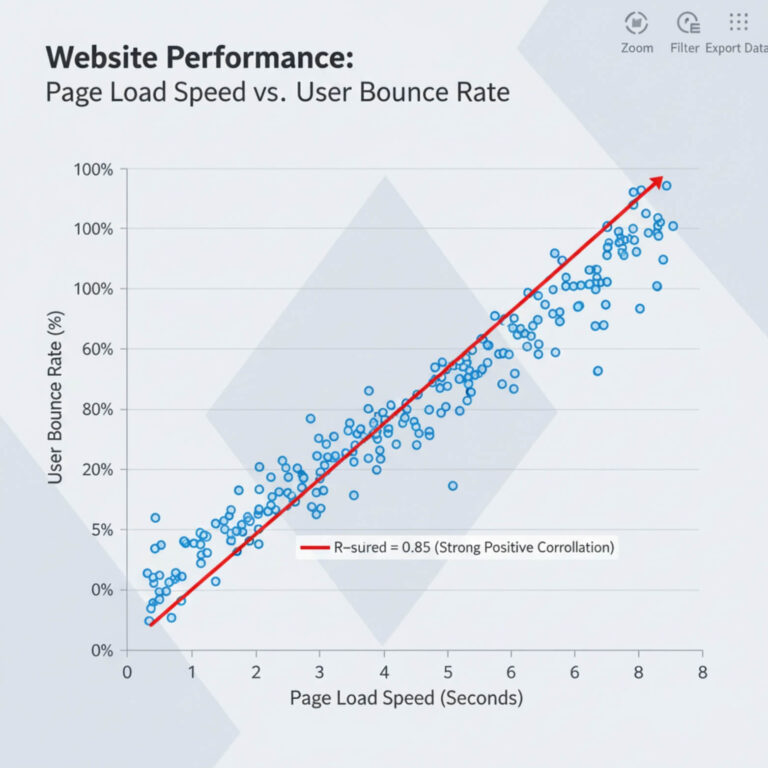
5. Phase 3: The Technical SEO Deep Dive for Site Health
Technical SEO is the unseen machinery that allows search engines to process your site efficiently. Ignoring this is like putting a Ferrari engine in a broken chassis. A solid Technical SEO foundation is key to achieving that $100/100$ Rank Math score.
5.1. Optimizing Page Speed for Desktop and Mobile
As highlighted earlier, Page Speed is a core metric. To ace this Google Ranking Factor:
- Compress Images: All images must be optimized for the web, using modern formats like WebP where possible. Use descriptive Alt Text that incorporates Focus Keyword or Secondary Keywords.
- Minimize Code: Reduce unnecessary JavaScript and CSS.
- Leverage Caching: Utilize browser caching to speed up load times for returning visitors.
5.2. Conducting a Comprehensive Website Audit
A regular Website Audit (at least quarterly) is vital to identify and fix hidden issues before they impact your rankings or Organic Traffic.
- Crawlability: Use tools to ensure Google’s crawlers can access all your important pages.
- Indexation: Check which pages are indexed and ensure irrelevant pages (e.g., thank you pages) are blocked.
- Fix Broken Links: Broken internal links hurt both User Experience (UX) and Technical SEO performance.
5.3. Mobile-First Indexing and Site Architecture
Google operates on a Mobile-First index, meaning the mobile version of your site dictates your rankings. Ensure your site is fully responsive and that the mobile version contains all the same content and internal links as the desktop version.
- Site Architecture: Use a clear, logical structure (like a pyramid) where all important pages are accessible within 3-4 clicks from the homepage. This is essential for both User Experience (UX) and spreading link equity for effective Search Engine Optimization (SEO).
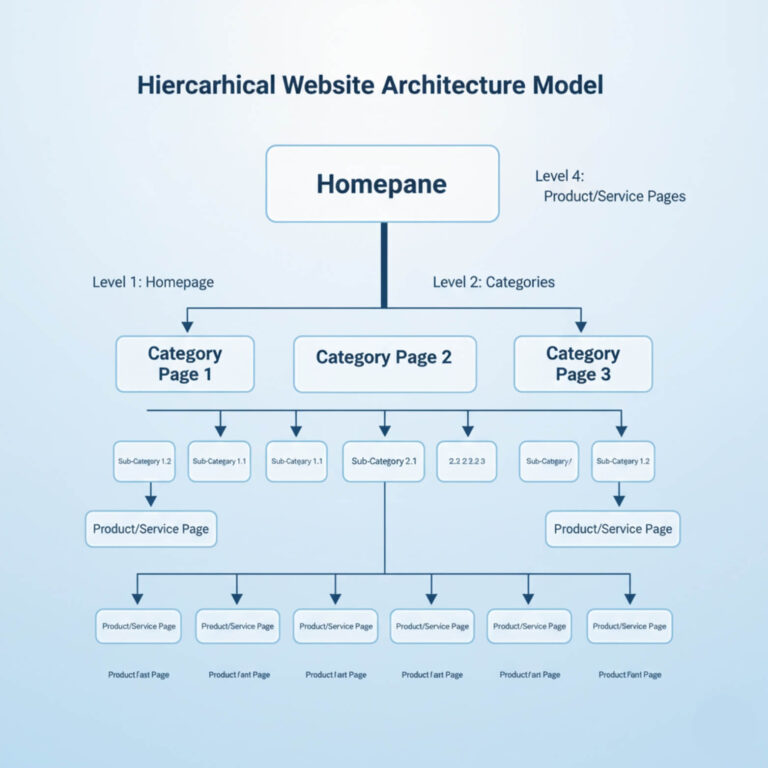
6. Future-Proofing: Essential SEO Tips 2026 and Beyond
Staying ahead of the curve is crucial in Search Engine Optimization (SEO). The search landscape is rapidly changing, driven by voice assistants and large language models (LLMs). These SEO Tips 2026 will ensure your strategy is future-proof and keeps generating high Organic Traffic.
6.1. Voice Search and AEO Optimization
The rise of smart speakers and mobile assistants means more users are searching conversationally. This is where Answer Engine Optimization (AEO) comes into play.
- Target Conversational Keywords: Focus on longer, question-based phrases. Instead of targeting “best SEO,” target “What are the best SEO Tips 2026 for beginners?”
- Direct Answers: Provide clear, concise answers immediately after the H2 or H3 heading that asks the question. This makes your content easily consumable by an AI assistant or voice search tool, increasing your chance of being selected as the spoken answer.
- Simpler Language: Use the easy-to-read, Grade 6 or below language you are currently reading. This simple style is ideal for voice search responses and improves User Experience (UX).
6.2. Generative AI and the Future of the SERP
Google is integrating Generative AI (GenAI) directly into the SERP through features like the Search Generative Experience (SGE). This means fewer users may click through to websites. To combat this:
- Focus on Depth and E-E-A-T: AI models often rely on highly authoritative, human-written content. If you are the established expert with strong E-E-A-T Guidelines, the AI is more likely to cite or recommend your site.
- Originality: Create content that offers unique data, original case studies, or deeply personal experience that an AI model cannot easily replicate.
- Transaction and Action: Optimize content that requires the user to take a transactional step (e.g., booking, buying, signing up). AI often struggles to fulfill these actions, pushing the user to your site.
6.3. Measuring Success: Tracking Organic Traffic and Conversions
Best SEO Practices require diligent measurement. You must track key performance indicators (KPIs) to see if your efforts in On-Page SEO Techniques and Off-Page SEO Strategy are paying off.
- Traffic Quality: It’s not just about more Organic Traffic, it’s about qualified traffic. Track bounce rate and “time on page” for your target keywords. High time on page suggests good User Experience (UX) and satisfied intent.
- Conversion Rate: Ultimately, Search Engine Optimization (SEO) is “money content.” Track how many organic visitors complete a desired action (purchase, lead form submission, download).
- Visibility: Monitor your average position on the SERP for your core and secondary keywords (like Google Ranking Factors).
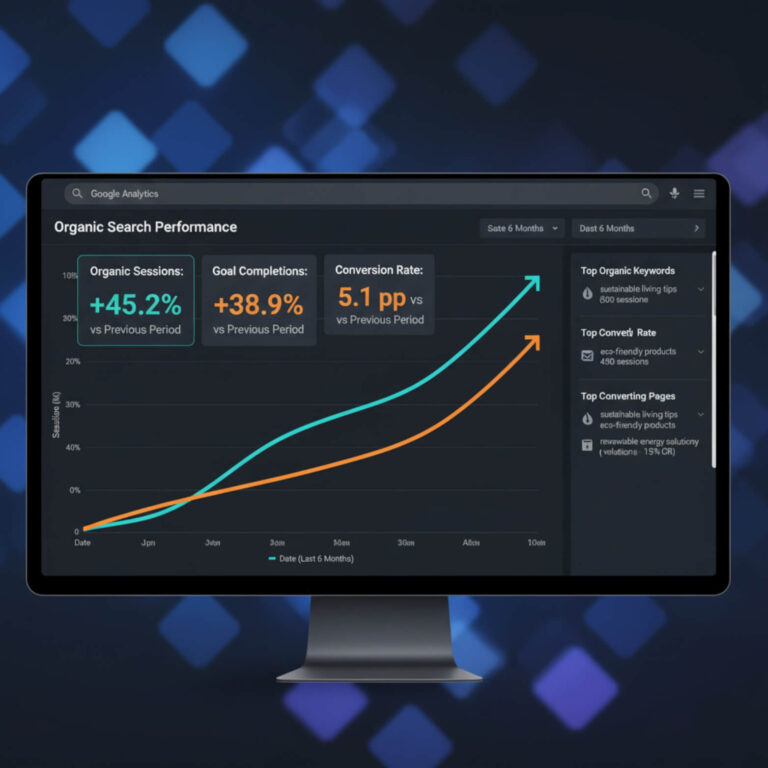
(FAQs)- Search Engine Optimization (SEO)
Implementing a detailed FAQ section is a critical component of satisfying user intent and leveraging the FAQ Schema for Rich Snippets on the SERP.
The single most critical factor is the combination of satisfying E-E-A-T Guidelines and providing an excellent User Experience (UX). Google now heavily rewards websites that demonstrate genuine authority and provide a fast, satisfying experience for their visitors. Your strategy should prioritize creating high-quality, trustworthy content that addresses a searcher’s needs fully, over aggressive or low-quality Backlink Building.
You should perform a comprehensive Website Audit at least once every quarter (every three months). The audit must cover three main areas:
- Technical SEO: Check for broken links, crawl errors, site speed issues (especially Page Speed), and correct mobile-friendliness.
- On-Page SEO: Review content quality, keyword use, and ensure proper implementation of all On-Page SEO Techniques and schema.
- Off-Page SEO: Analyze your backlink profile, disavow any toxic links, and check brand mentions to ensure a clean Off-Page SEO Strategy.
Yes, absolutely. High-quality, relevant backlinks remain one of the top Google Ranking Factors. However, the focus has shifted entirely to quality from authoritative and niche-relevant sites. In 2026, one link from an established industry expert (due to E-E-A-T) is worth hundreds of generic or spammy links. Your Backlink Building efforts must be strategic and focused on genuine relationship building.
Keyword Research and Content Optimization is the foundation of every successful Search Engine Optimization (SEO) campaign. Today, it’s less about finding a single phrase and more about mapping user intent and covering a topic completely. Use your main keyword and relevant secondary/LSI terms like Technical SEO, Content Marketing, and Best SEO Practices to build comprehensive, structured content that leaves no search question unanswered.
While implementing immediate On-Page SEO Techniques can bring some quick wins, achieving significant, stable Organic Traffic growth from a full Search Engine Optimization (SEO) strategy typically takes 6 to 12 months. This timeframe allows search engines to fully crawl, index, and apply their Google Ranking Factors to your site, particularly the slower-moving metrics like E-E-A-T and link authority. Consistency in applying SEO Tips 2026 is key.
8. Conclusion: Implementing Best SEO Practices for Lasting Dominance
You now possess the advanced knowledge required to implement a successful, future-proof Search Engine Optimization (SEO) strategy. Achieving $100/100$ in Rank Math isn’t just about hitting a score; it’s about aligning your site perfectly with the sophisticated demands of Google’s modern algorithm.
To dominate the SERP, you must execute a holistic strategy:
- Build Trust: Dedicate yourself to the E-E-A-T Guidelines through expert content and strong authority signals.
- Perfect the Experience: Ensure your Page Speed is flawless and your User Experience (UX) is simple and intuitive.
- Execute Strategically: Use the best combination of On-Page SEO Techniques and a quality-driven Off-Page SEO Strategy (especially Backlink Building).
By consistently applying these Best SEO Practices, you will move beyond chasing short-term wins and build a stable, high-authority website that consistently generates significant, high-converting Organic Traffic.
Don’t let your competition capture your audience. Now is the time to put this knowledge into action. Perform a thorough Website Audit and transform your site into the authority Google wants to rank.
Ready to transform your site and start ranking on the first page? Contact our expert team for a personalized SEO strategy session today!
